




























Art in Architecture
Media installation FLUX as part of the corporate interior of Sparkasse Münden
The Area Composing interweaves images and sounds of the three-river city of Hannoversch Münden into a medial urban portrait that links the rivers as historical lifelines with the virtual financial flows of the present.
The installation runs as a video triptych with a permanently integrated sound system in the new reception hall of the Sparkasse in Hannoversch Münden. The art-in-building project was developed in close cooperation with the architects‘ office.
PROJECT SCOPE
- Idea and artistic conception
- Performance conception
- Image and sound recording
- Composition
- Technical planning
- Cooperation with building owner and architect
Project Participants
- Sparkasse Münden
- schuh-Architekten, Kassel
- Uta von Schenck Lichtkultur, Göttingen
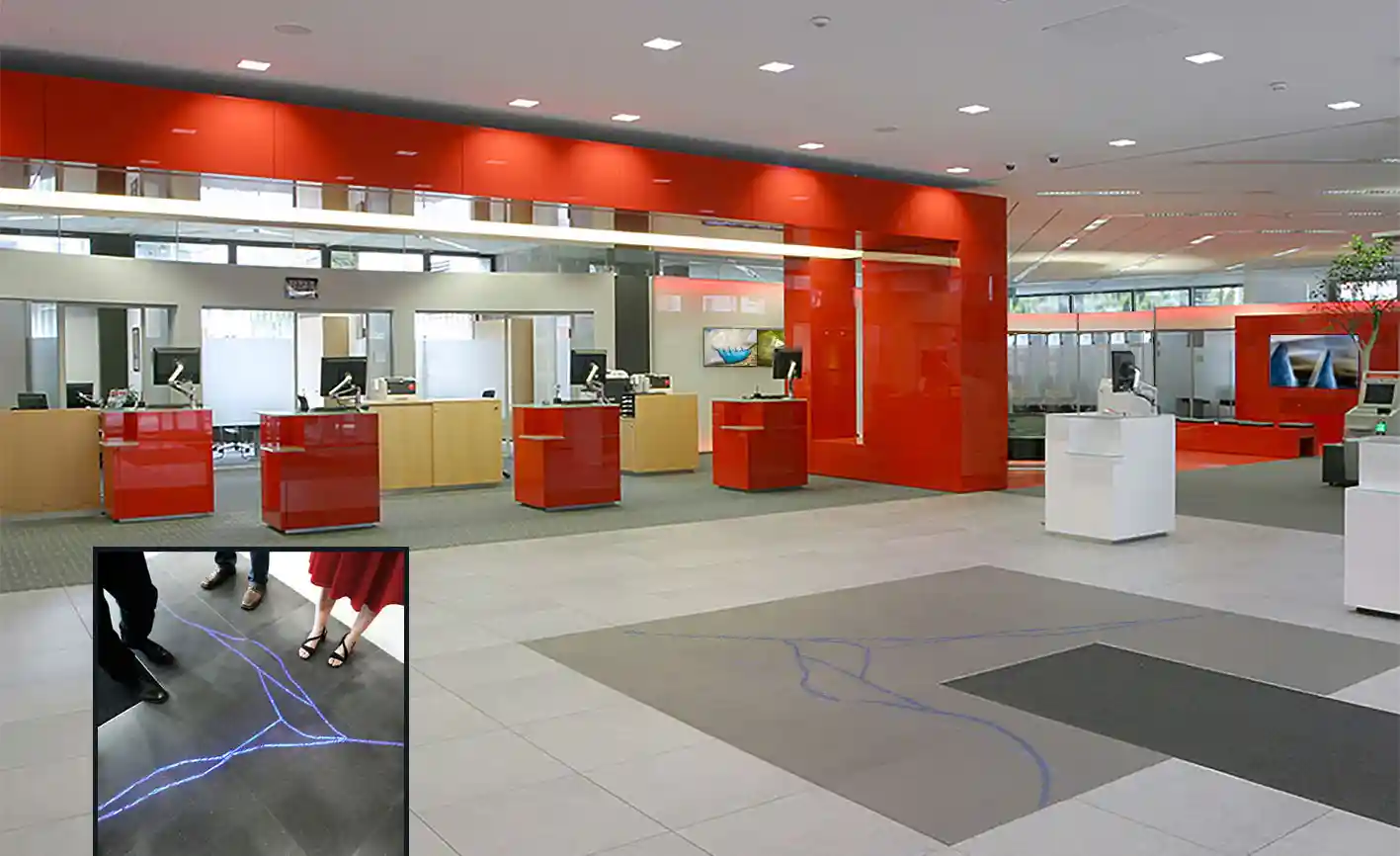
Art in building – Kunst am Bau
The customer area of Sparkasse Münden, which was built in the 1970s, was completely remodeled and modernized in 2013. The former cash hall has been turned into a sales area with a communicative atmosphere. For the entrance area and the waiting zone, the building owner wanted a media art object with contemporary technology that would create a direct link to the Three Rivers City, its history and its inhabitants.
Jürgen Schuh, the Kassel architect commissioned with the conversion, contacts us already in the planning phase. We create an artistic concept that convinces the Board of Directors of the Sparkasse. „FLUX“ is included by architect Schuh as an integral part of the interior design from the very beginning.
Conception
Hannoversch Münden lies like an island between the rivers Fulda, Werra and Weser. These transport routes made the town an important crossing point for traders and travelers as early as the Middle Ages. The flow of water as well as the flows of information, goods and money that met here shaped the town’s history. They find their modern continuation in form of virtual financial flows at today’s transshipment point: The Sparkasse. From this basic conceptual theme we derive the title of our Area Composing: FLUX (lat. river).
The images of the Area Composing portray the entire town, its bridges, its numerous fountains as well as prominent buildings such as the Welfenschloss, the St. Blasius Church and the town hall. The sound for the Area Composing includes field recordings of the town, such as the glockenspiel at the town hall, as well as numerous historical sound documents, which give the medial town-portrait a historical dimension.















Composing as a triptych
We assign the recorded images to three thematic areas that correspond to the RGB color space: Architecture/red – Nature/green – Water/blue. From these we compose three Liquid Images with different lengths, which are projected as continuous loops in parallel on three LED screens. In the overall perception, this creates an infinite number of image combinations.
In the sound composition, the rivers first make their way tonally through the landscape and condense at the point of junction. We integrate musical interpretations of notable events in the town‘ s history, so that the sound stream takes the listener on a historical journey. In the second part, we use electronic sounds to thematize the digital money and financial flows of today. The two-part sound composition also runs in a loop and encounters other image combinations with each new viewing – an endless flow of perceptions.
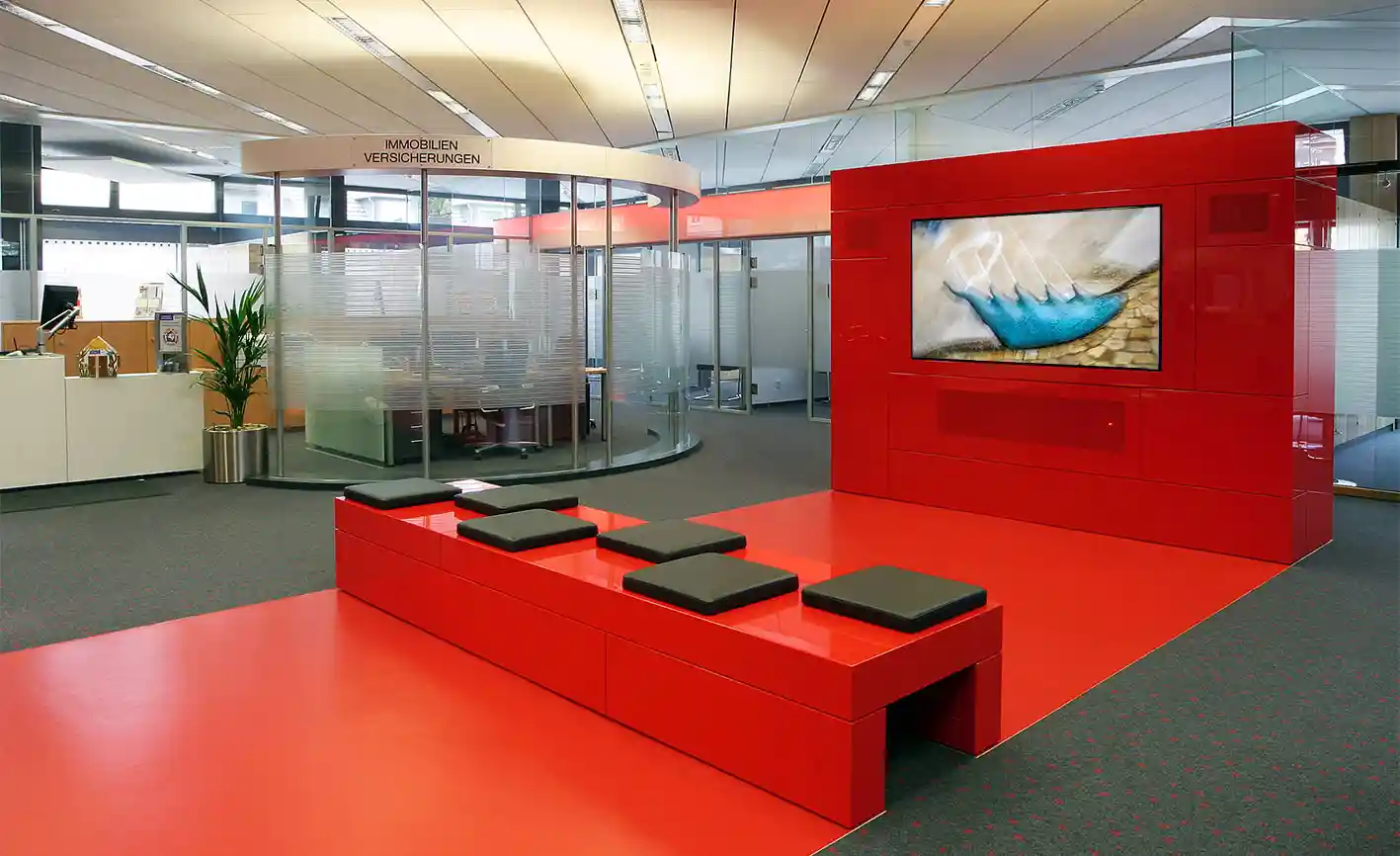
Part of the Corporate Interior
Architect Schuh designed the waiting zone as a cozy communication island with unusual seating furniture. Shielded from the hustle and bustle of the Sparkasse, this is a place of tranquility and inspiration where art can be experienced. For the video triptych, Jürgen Schuh designed a room partition made of colored Plexiglas, which separates the waiting area from the offices and ensures discretion. Alternatively, the Area Composing can also be shown as a single installation on a large screen. The sound composition can be faded in via a permanently integrated sound system.
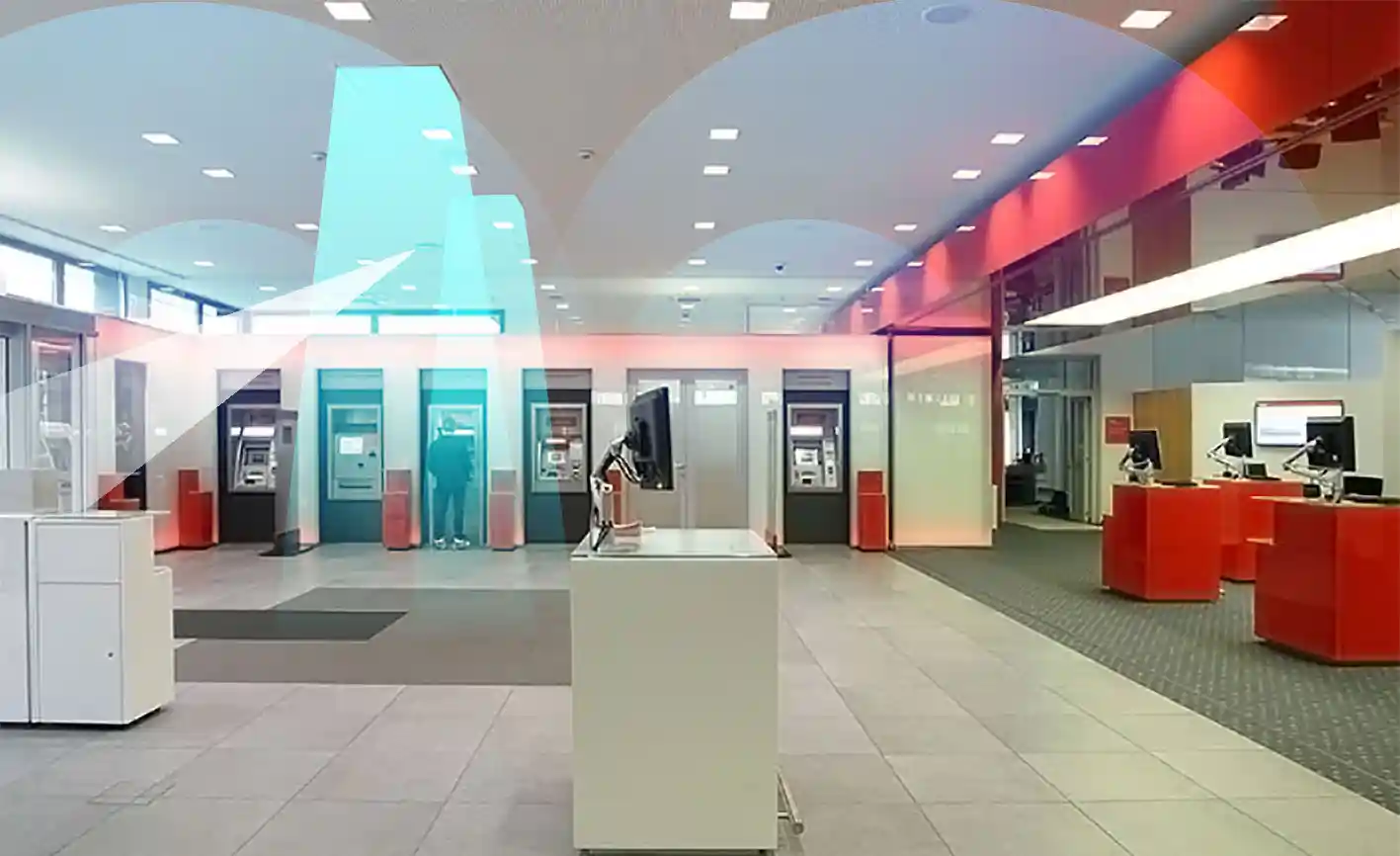
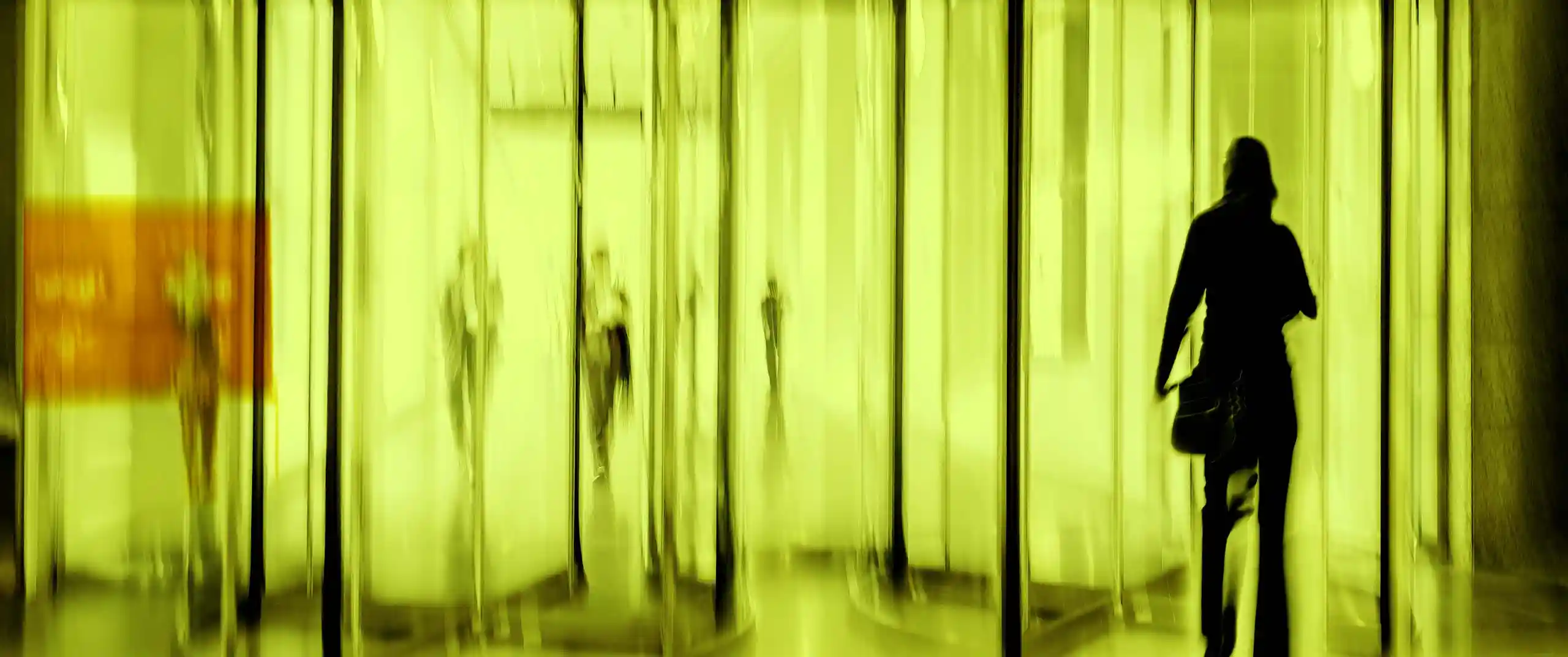
Sound shower in the entrance area
The soundtrack of the Area Composing FLUX can also be played in the entrance hall of the Sparkasse via an integrated loudspeaker system. The area with the self-service terminals is open around the clock and can thus be transformed into a small concert hall at night.
During the day, visitors to the Sparkasse are surprised at this point with sound showers. Randomly selected event sounds are triggered via a motion detector. These sounds are part of the FLUX sound composition and thus draw attention to the media installation in the waiting zone.
Light installation
Light artist Uta von Schenck has designed a walk-in light installation for the floor of the entrance hall. Blue LED strips embedded in transparent floor panels show the courses of the rivers Fulda, Werra and Weser.
For the visitors of the Sparkasse, the acoustic and visual portrait of the Three Rivers City creates a perception of their town that is both conscious and subconscious at the same time. For architect Schuh, this dual coding of art is very desirable. Architecture should not be decorated with art. Rather, as part of the corporate interior, art on the building should inspire people, entertain them, and revitalize the space, he says. The members of the Board of Directors of the Sparkasse appreciate FLUX as a „work of art with many years of substance“. It requires confrontation, they say, but is nevertheless discreet.
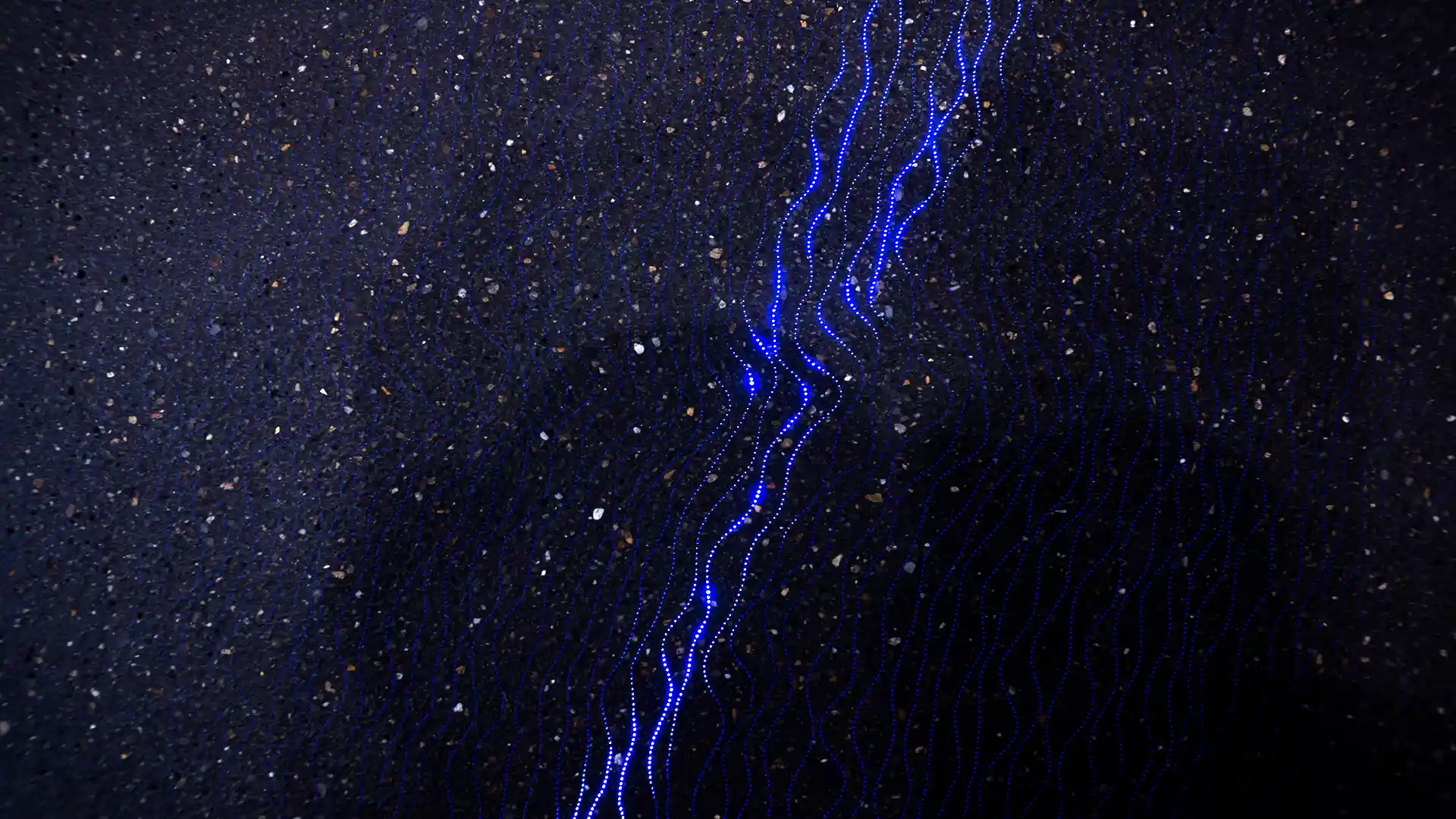
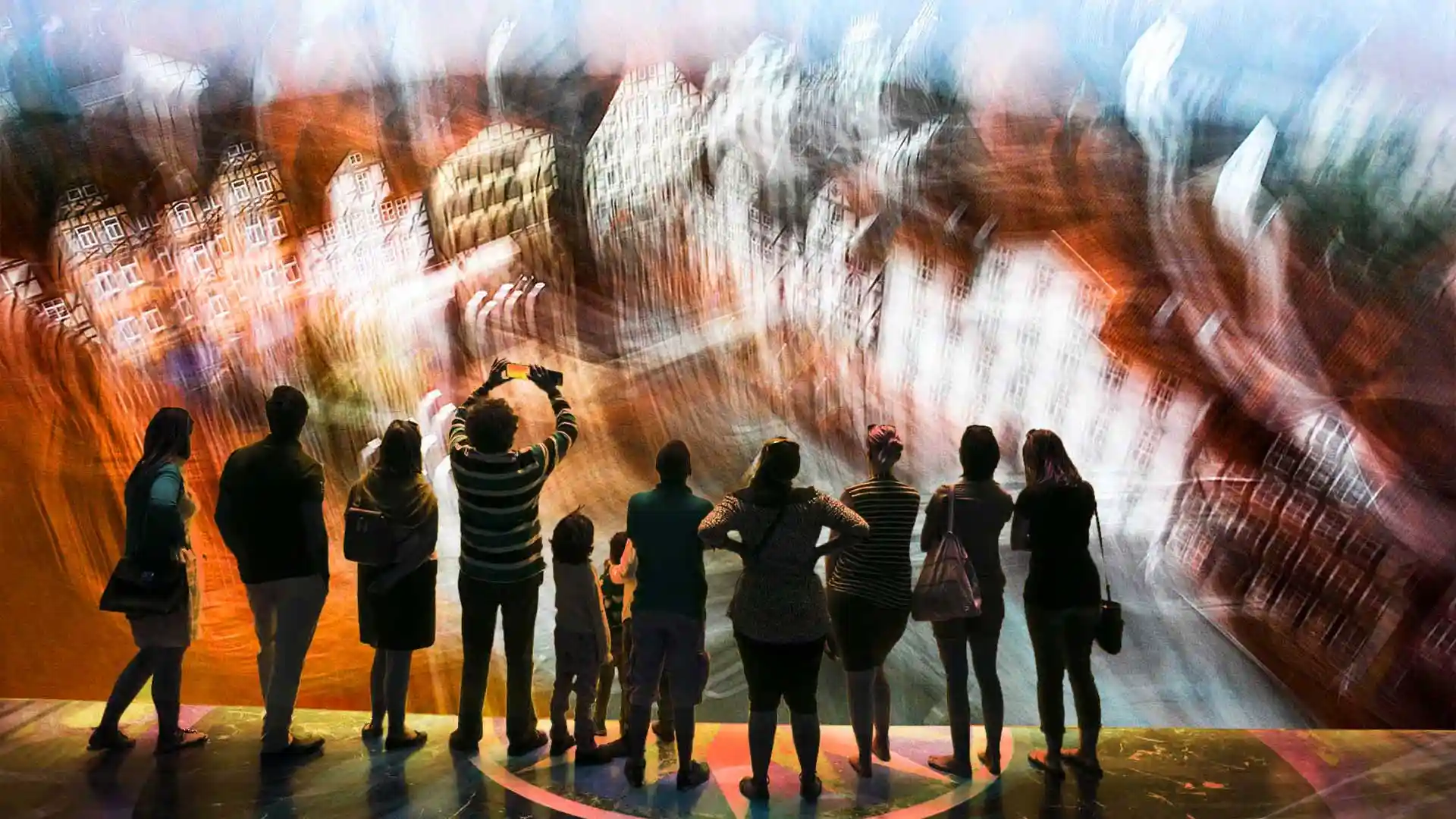
Vision
Our original idea for the presentation of FLUX was a rear projection onto a wall of about 35 square meters made of coated glass with a recessed door through which customers can enter the back area of the Sparkasse. For technical reasons, this idea could not be realized.